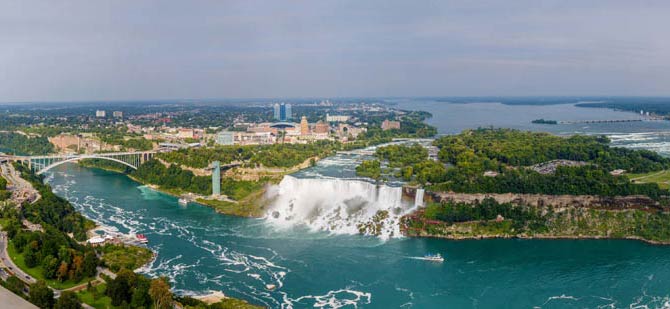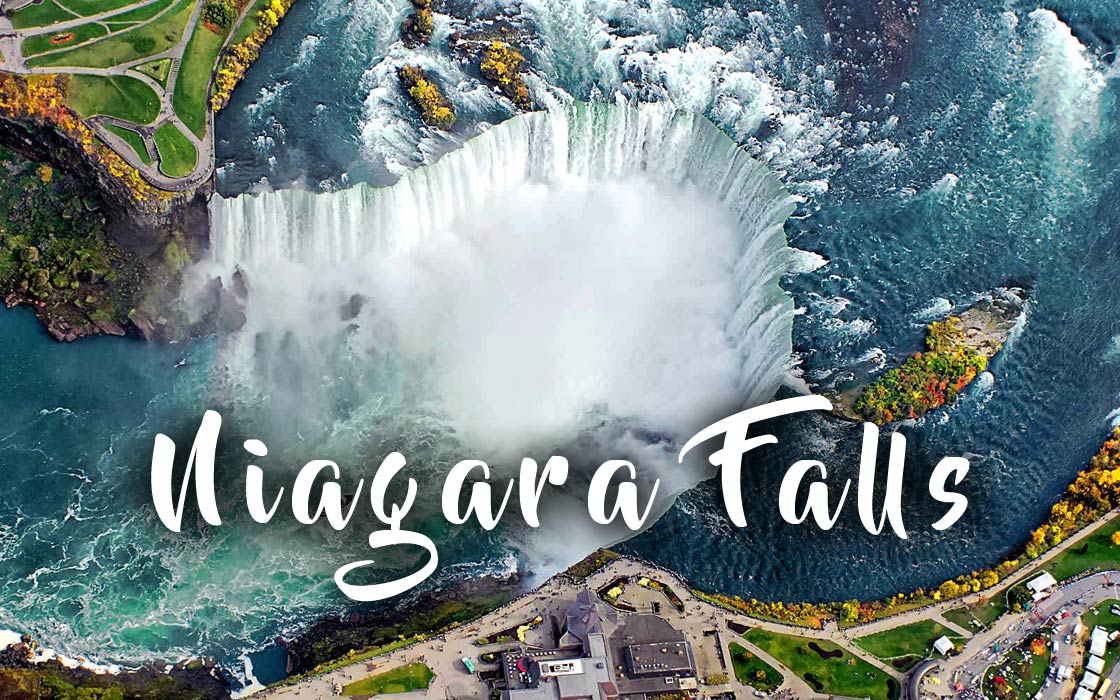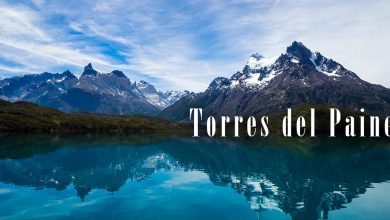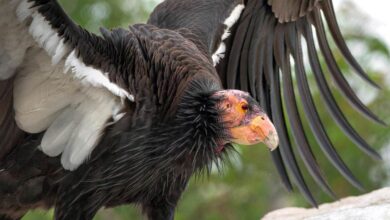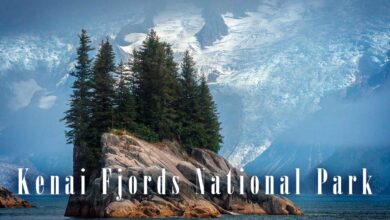Niagara Falls – a fascinating waterfall
Niagara Falls
The biggest star in North America is Marilyn Monroe? Or maybe Pamela Anderson? Donald Sutherland? Or maybe none of them…;)?
On the border of the USA and Canada, we will meet a real object of desire for stuntmen – amateurs and acrobats. It is also a huge inspiration for painters, singers, writers and filmmakers. Is it human? As you probably guessed – no.
We direct our attention to Niagara Falls – one of the most famous natural objects on Earth. The beauty and power of Niagara has caused an avalanche of delight over the years, but also of moves that for many are simply insane. This is the story of North America’s magnetic waterfall, which, although not the largest, is perhaps one of the world’s most fascinating waterfalls.
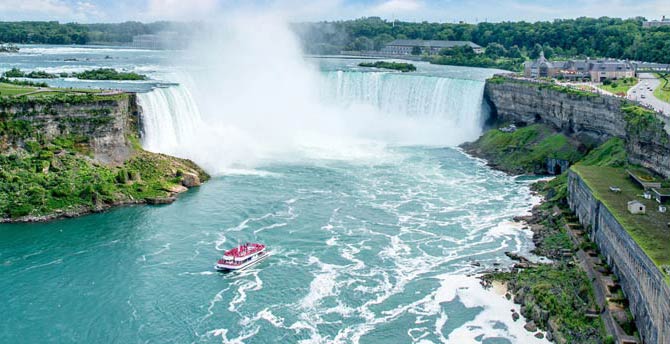
Location
Niagara Falls is a group of three waterfalls that act as the border between the United States and Canada. They are located between the Canadian province of Ontario and the American state of New York. Niagara Falls are located on the river of the same name.
Niagara includes:
- Horseshoe Falls – the largest waterfall, a large part of which is on the Canadian side. The edge is 2,700 ft (820 m) long and approx. 167 ft (51 m) high.
- American Falls – unlike its bigger “brother”, is located entirely in the USA
- Bridal Veil Falls – the smallest of the three waterfalls, it is located in the state of New York.
- The last two waterfalls are next to each other, separated only by a piece of land called Luna Island. American Falls and Bridal Veil Falls form a 323 m (1060ft) long ridge, while their height is 53 m (174 ft). Due to the presence of huge boulders at the base of the falls, the real height is approx. 20-30 m (66- 98 ft).
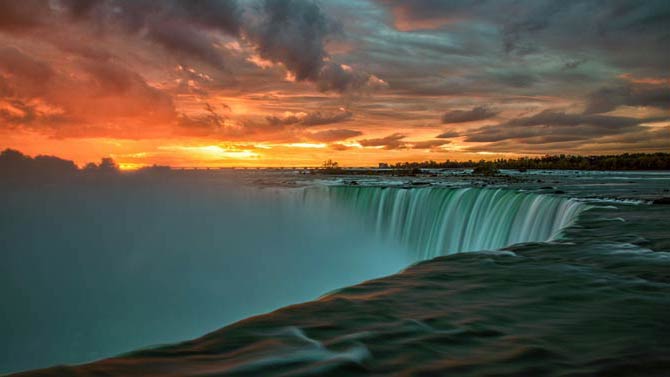
Name
According to Canadian archaeologist Bruce Trigger, the waterfall is named after the Iroquois language. Originally, the word Niagagarega was meant to describe the so-called neutral peoples who lived in the northern shores of Lake Ontario and Erie in the 17th century. According to George R. Stewart, “Niagara” comes from the Iroquois town called Onguiaahra, meaning “point of land cut in two”.
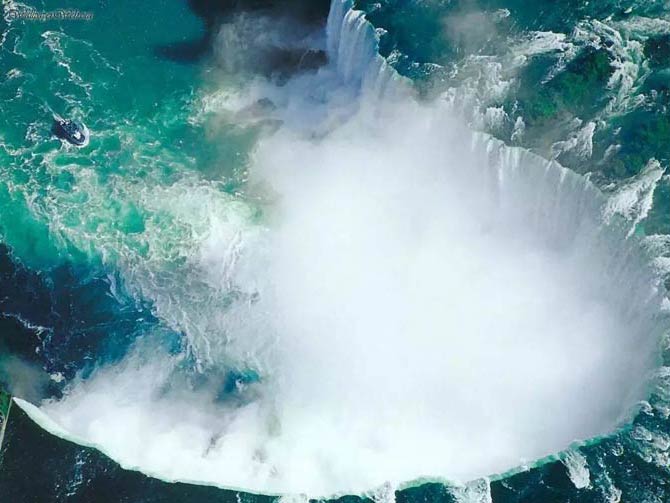
The rise of Niagara
The Niagara River, like the Great Lakes, is a remnant of the last ice age. It took place about 18,000 years ago. Southern Ontario was then covered with ice 2-3 km thick. The Niagara Peninsula was freed from the ice around 12,500 years ago, leaving Lake Erie and Ontario and the Niagara River behind. The waterfall began to form as a result of long-term rock erosion.
Originally, the waterfall was located a bit further, near today’s Queenston, but due to the erosion mentioned above, it moved. A memento of the original waterfall is a canyon that stretches north of the present waterfall.

Niagara Falls as a tourist attraction
The tourist peak is during the summer season, when Niagara Falls is an attraction both day and night. From the Canadian side, the floodlights on the sides of the waterfall illuminate the falling sheet. This performance lasts from dusk to midnight.
Tourists like to go on a cruise in the Niagara foothills. This cruise is called the Maid of the Mist and is Niagara’s oldest tourist attraction.
The American side also offers:
- walks on a specially created lane
- admire the waterfall from the Prospect Point Park observation tower
- spending time on Goat Island – a small island located right above the waterfalls
On the Canadian side, we can use:
- Queen Victoria Park – A park located across from Horseshoe Falls
- Skylon Tower observation tower, from which you can watch the waterfalls and the river, as well as the Tower Hotel – an observation tower connected to the hotel, observation deck, restaurant and … a wedding chapel
- travel by “air car” – Whirlpool Aero Car – by cable car located in Ontario. It transports passengers from the Niagara River to a natural whirlpool called Niagara Whirlpool.

Does Niagara Freeze In Winter?
Niagara Falls is located in an area where winters can be snowy and cold. However, can the water in the waterfall freeze and turn into an ice sheet?
On the one hand – yes, the water in Niagara freezes, but does not freeze, as it probably would be shown in the cartoon. The falling water and the mist that forms from it freezes along the river bank and the waterfall itself. In this way, ice mounds, up to 15 m thick, form.
Under favorable conditions (i.e. during long frost), these mounds delaminate for a length of several meters across the river, creating the so-called ice bridge. Until 1912, tourists could easily walk on such bridges and admire the Niagara Falls from below. In 1912, three tourists died as a result of breaking one of such structures. Since then, similar walks have been completely banned.
The flow of water in Niagara was naturally stopped only once. This took place on March 29, 1848, when an ice blockage blocked the flow of water in the upper part of the waterfall for several hours. This is the only recorded case of its kind.
To sum up – the waterfall does not freeze, only its shores are covered with ice, sometimes creating ice bridges.

Water for the bold
People have crazy ideas. Not all of them can be implemented, for example, due to the lack of appropriate conditions. Niagara Falls has at one point become a place for such ideas to come true. The first known daredevil who decided to make his dreams come true was a certain Sam Patch. It was with him that a series of “barrel” trips to Niagara Falls began.
The most famous person who survived the “cruise” on the waterfall in a barrel was 63-year-old teacher Annie Edson Taylor. On her 63rd birthday, October 24, 1901, after preparations and tests (including on a cat …), she sailed in a barrel caught by a strong current of the Horseshoe Falls. After the fall, the rescuers took the living Annie out of the barrel, with only a wound on her head. There were several similar daredevils, for example, Bobby Leach, Karel Soucek and Steve Trotter. However, not everyone was as lucky as Annie – Bobby Leach recovered for about half a year after suffering numerous fractures as a result of the Niagara fall. There were also fatal falls.
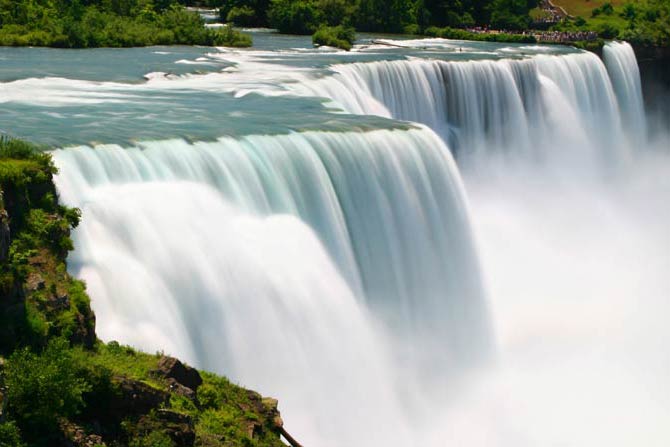
The last known man to survive the fall of Niagara was an anonymous 40-year-old. In 2012, after climbing a fence, he deliberately jumped into a waterfall. He is the third person to survive the fall of Horseshoe Falls (Annie was the first, Bobby was the second).
Niagara Falls also attracted acrobats eager to walk the rope stretched over the gorge. The first and most famous man who managed to do this was the 19th-century French tightrope walker – Charles Blondin. In the summer of 1859, he walked a 340-meter-long rope (1115ft) suspended 49 meters (161 ft) above the Niagara Gorge.
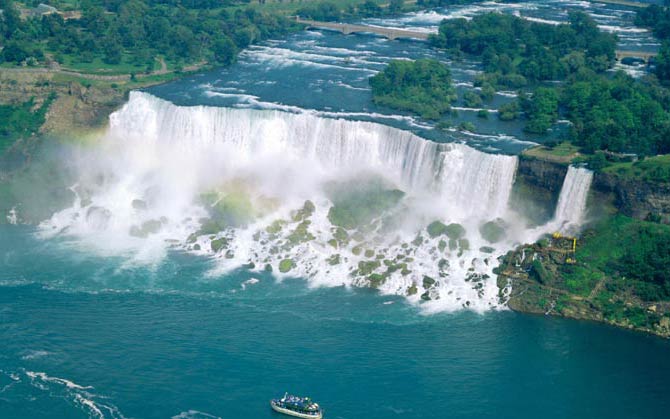
Detailed data / dimensions
Niagara Falls
- Height: 51-53 m (167 – 174 ft), minus the layer of numerous boulders is approx. 20-30 m (66- 98 ft)
- Edge length:
- Horseshoe Falls – 820 m (2,700 ft)
- American Falls and Bridal Veil Falls – 323 m (1060ft)
- Average flow: 2400 m3/s (85,000 cu ft/s)
- Records: the water from Horseshoe Falls drops with great force. For this reason, Niagara is called the strongest waterfall in North America.
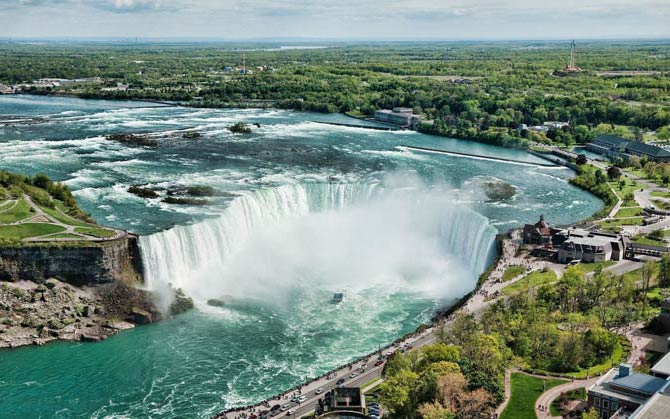
Niagara Falls – interesting facts
- The green color of the water near the waterfall is the result of the huge amount of dissolved salts and very fine rock fragments, created as a result of the progressive erosion process.
- Due to its strength, Niagara Falls is a valuable source of hydropower. From the nineteenth century to today, mills were built near the waterfalls, and with time dams and entire hydroelectric plants.
